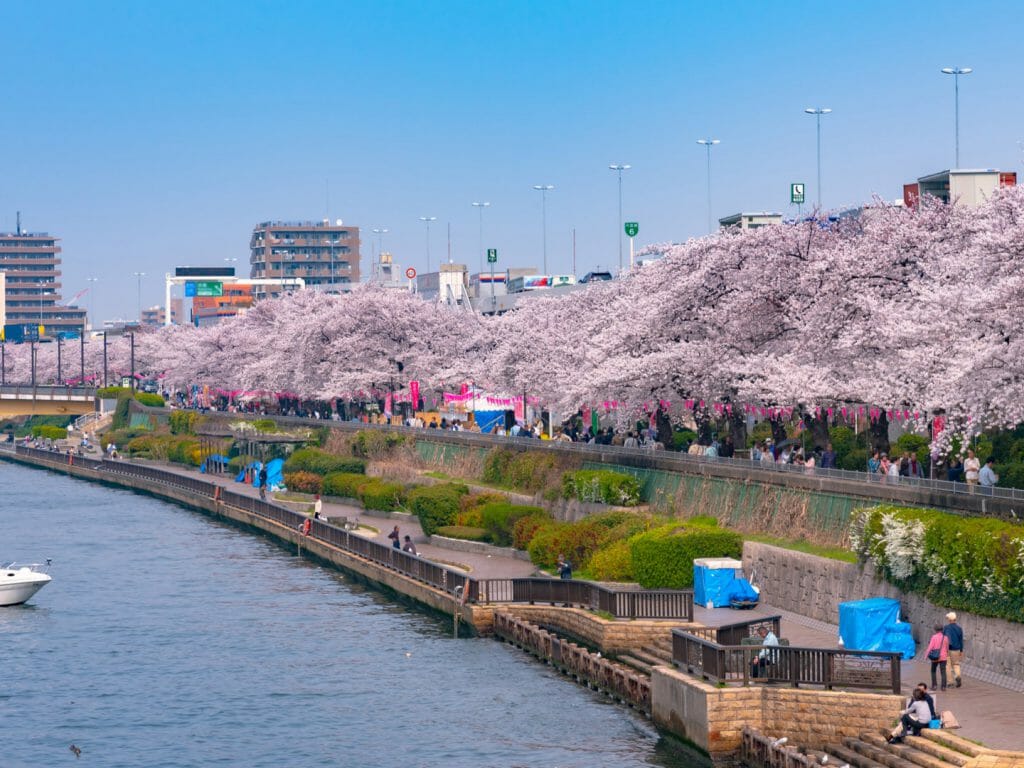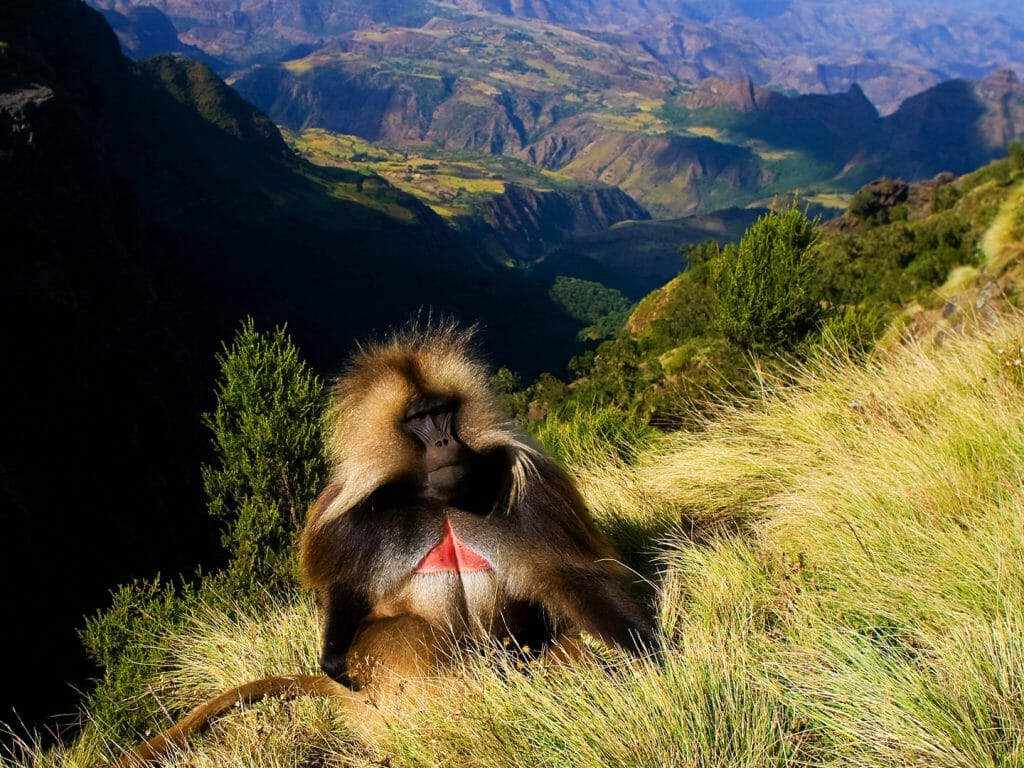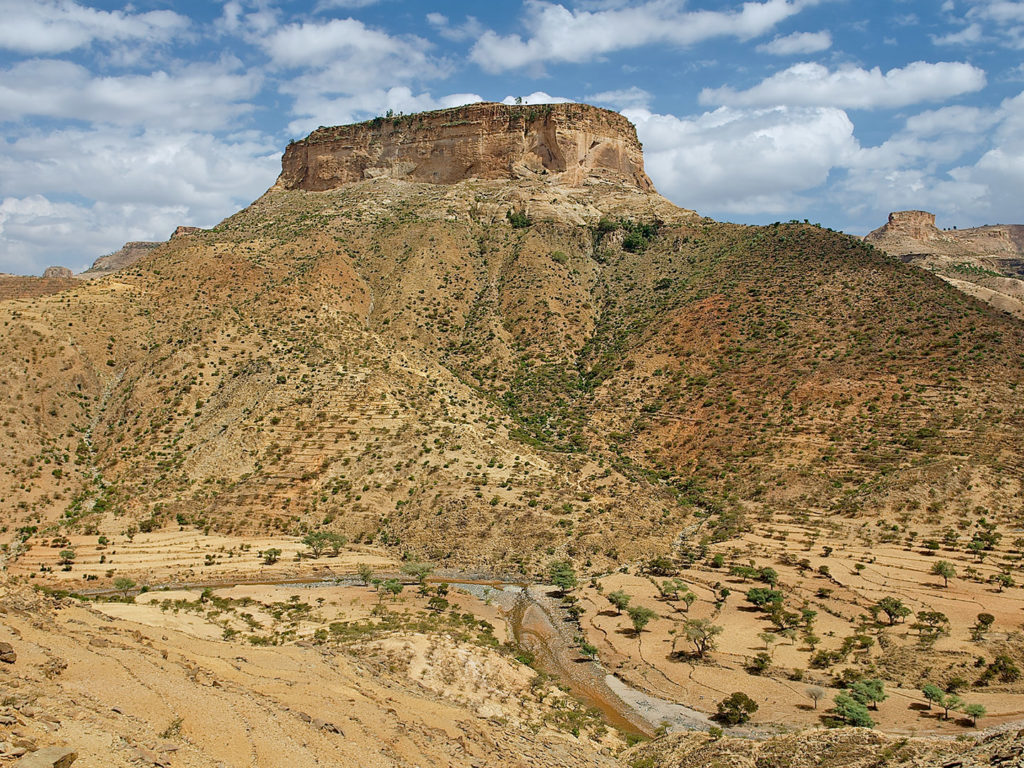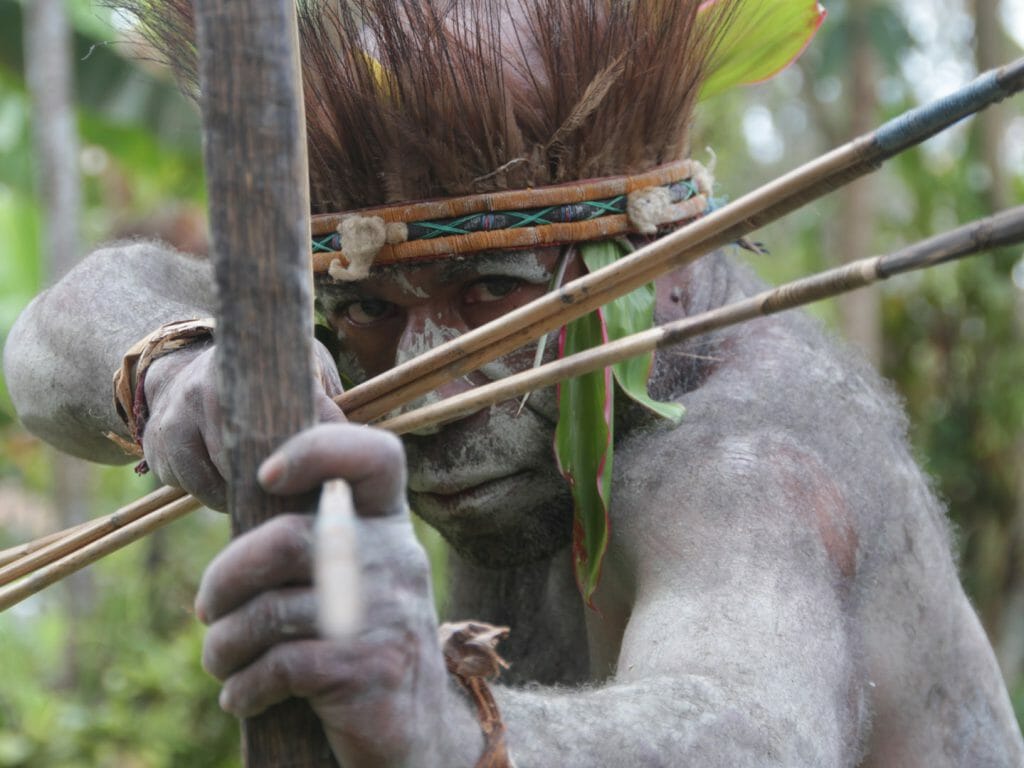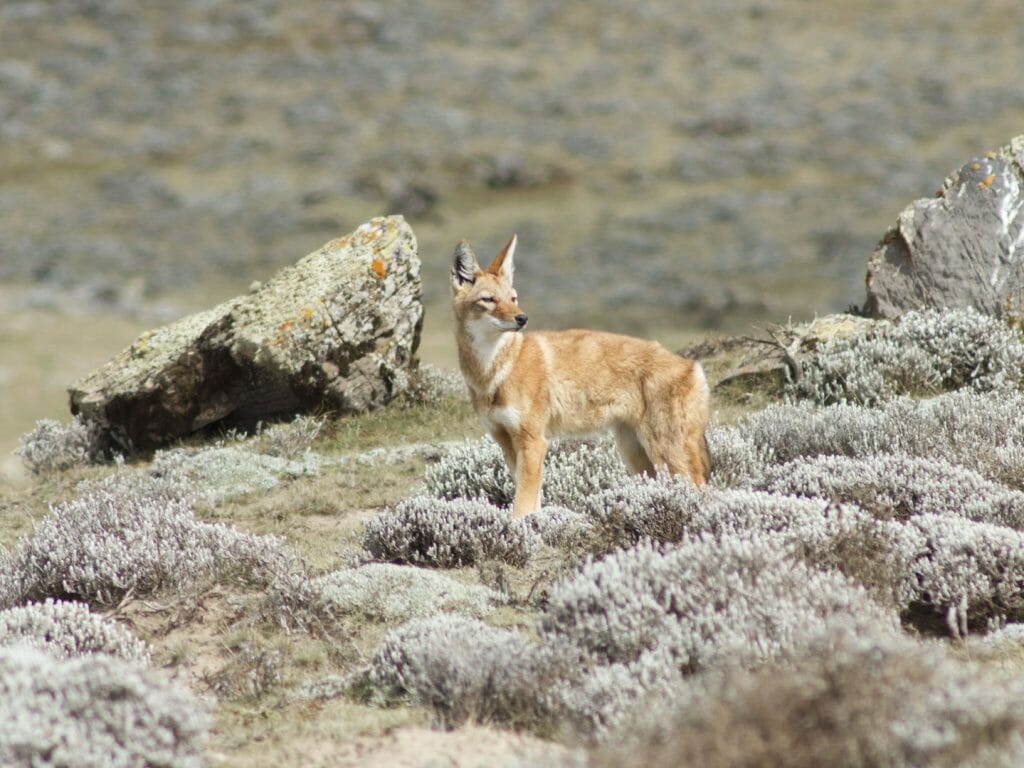The hum of affable conversation is in the air as the village of Dus gathers to prepare for a ceremony. The Kara tribe love nothing more than a raucous dance-off and I have been invited to witness the pre-party preparations. The men are putting on make-up. They have exchanged their coveted AK47s for tiny paint brushes and sticks which they use to delicately apply a mixture of ash, clay, crushed charcoal and ochre to themselves and to each other. Vanity mirrors are passed around and the men coquettishly admire their reflections. They look exquisite and they know it.
No more than ten metres from the cluster of men, the women and children are gathered under a fig tree. The sound of easy laughter is indicative of their mood, no doubt enhanced by the cool shade and the anticipation of the ceremony to come. The children form a bridge between the two groups with the older boys eager to associate themselves with the men. A couple of twelve-year-old boys practise their make-up techniques on an unsuspecting toddler. He is happy to receive their attention, blissfully unaware that the young boys have a long way to go before they match the cosmetic skills of their respected elders. The toddler catches me watching and smiles gleefully from behind his haphazard makeup.
I am travelling across the Omo Valley, a remote south-western enclave of Ethiopia, home to some of Africa’s oldest and most fascinating tribes. The Omo River is the life-line of the region, meandering from north to south where it empties into Lake Turkana on the Kenyan border. For as long as any of the tribes of the Omo can remember, the river annually breaks its banks and in doing so creates silt-rich, fertile grounds for the people to plant essential crops. That was until a few years ago when three giant hydro-electric dams were installed on the Omo. In conjunction with the dams, three huge plots of land in the Omo have been ring-fenced for commercial agricultural use, growing both cotton and sugar cane.
“The apocalyptic vision of the Omo is of vast swathes of commercially farmed land” says Will, one of Steppes’ partners in the Omo Valley.
The Ethiopian government has big plans for this region, harnessing the awesome power of the Omo river to provide irrigation for massive commercial farms (under the auspices of Turkey and China) and to generate hydro-electric power on an unprecedented level. The last dam to be built, Gibe III generates more kilo-watts of electricity than Kenya currently uses and there are two more dams still to be implemented. Ethiopia is positioning itself as the key provider of power to the countries of north and east Africa but at what cost to the lifestyles of the people of the Omo?
I ask my local guide Lale, a proud Kara from the village of Dus, what the people in the Omo think of the government’s plans.
“The people in the valley want food not electricity” he replies witheringly.
I have been invited to spend a couple of days with the Mursi. The Mursi community are already feeling the negative impact of the Gibe dam project and have migrated from their traditional home beside the Omo river.
“The river no longer floods here and so the people have moved up into the mountains where the south facing slopes offer them a better chance of growing sorghum and millet.” Will explains.
Will has contacted the Mursi elders and has traded sorghum and coffee in exchange for their permission for us to put up a temporary mobile camp on their land, next to the river. They have come to the camp to collect their trade-off and spend time with us. The Mursi men sit together on their traditional stools and chat with ease while cleaning their prized AK47s. Two of the men share out the coffee husks they have received using a large, hollowed out gourd to measure 20 equal piles on a blanket. There are smiles all around as the water boils on the fire in preparation for a brew.
A group of young girls find the shade of a tree and make lip plates out of clay. I watch as they carefully smooth the edges of the discs and inscribe simple patterns on the flat surfaces. One of the girls signals for me to join them. They are assertive, alert and playful and use the excess clay from their lip plates to make small marbles which are used to play a game like jacks. The girls throw the marbles from their cupped hands into the air and catch them on the backs of their hands with ease. They invite me to have a go, but their effortless dexterity makes my clumsy attempts look ham fisted, much to their amusement. I don’t mind being the butt of the joke though as I am touched by the ease with which I am accepted into the social circle of the young Mursi girls. My status is subsequently improved by the video I take on my phone, of the girls playing with the marbles. I use time-lapse and when the girls watch themselves playing the game at quick speed, they laugh so hard, I fear they may choke on their lip plates. That night, the Mursi gather by the fire to dance and sing songs. I lie in my tent and blissfully fall asleep to the mellifluous sound of a Mursi lullaby.
My last night in the Omo is spent back in Dus at the Kara ceremony. The men and women I watched prepare for the celebration look resplendent in their make-up and are now fully ensconced in a riotous dance. The women ululate and jump with their heads pushed forwards and their backsides thrust out like demented chickens. The men join arms and stand on the outer ring of this commotion watching intently. As the women’s dancing reaches a climax, the men burst into middle of the circle, with arms still linked and indulge in outrageous pelvic thrusting in perfect harmony with each other. The posturing physicality is like an X-rated school disco as one man breaks off from the line and repeatedly bounces bolt upright in front of the women who laugh and jeer.
I bump into Lale who is enjoying the opportunity to reconnect with his fellow villagers.
“I watched these ceremonies when I was a young boy,” he says, laughing “and they haven’t changed…”
Change is on the horizon though for the Omo valley. In a region where ceremony and ritual are essential manifestations of culture and identity, I wonder if the new order will allow time for such expression. I wonder to what extent will the vitality of the people and their celebrations be diminished by the rigours of commercial farming and the unnatural demands made on the Omo river.
As the sun sets on Dus, the dancing shows no sign of abating. The older men have stepped aside and a group of younger men, bare chested with white painted handprints on their torsos, jump and thrust with athletic vigour. The young men link arms and the ceremony endures.


